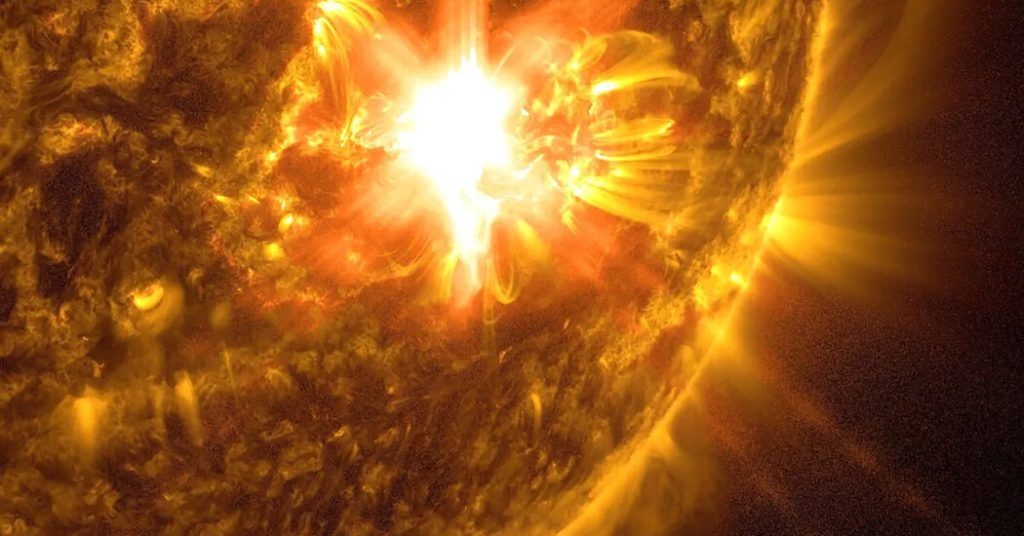A powerful geomagnetic storm caused by a hyperactive sun is expected to produce vivid displays of the northern lights, or aurora borealis, in many parts of the Northern Hemisphere over the weekend. The National Oceanic and Atmospheric Administration issued a warning on Friday as bursts of material from the sun’s surface entered Earth’s atmosphere, causing irregularities in power, navigation, and communication systems. Despite these disruptions, major power utilities were prepared for the solar storm and their customers were largely unaffected. For most people, the solar storm was a gift, as it created ribbons of pink, purple, and green light across night skies in the United States, Canada, and Europe.
Residents in lower latitudes, including those in North Carolina and Arizona, were treated to the rare sight of the northern lights on Friday night. Aurora enthusiast Benjamin Williamson traveled to the Portland Head Light in Maine to witness the event and described it as even more incredible than the solar eclipse he witnessed in 2017. Solar storms are caused by violent expulsions of charged particles from the sun’s surface, which can interact with Earth’s magnetic field, resulting in a geomagnetic storm. NOAA categorizes geomagnetic storms on a G-scale from 1 to 5, with this storm reaching G5, making it the strongest to hit Earth since October 2003.
The solar storm is being caused by a giant cluster of sunspots on the solar surface with strong magnetic fields. Energy providers have been vigilant in preparing for potential disruptions, as a similar storm in 1989 disrupted power systems in Canada and the United States. Some utilities experienced high temperature alarms triggered overnight, but it was unclear if they were related to the solar storm. While the power system did face some additional stress from the storm, there was no imminent threat to damaging equipment. Managers of electric grids across the Northeastern United States took extra precautions to keep electricity flowing and issued warnings to customers about potential disruptions.
PJM, the manager of the nation’s largest grid network, issued a geomagnetic disturbance warning that would continue through the end of Saturday. ISO New England also issued a precautionary alert, notifying participants in wholesale energy markets and owners of electrical generation equipment about abnormal conditions on the power system. The solar storm is ongoing, with effects expected to continue through the weekend. The aurora borealis, usually only observed at latitudes closer to the North or South Pole, was visible to residents in lower latitudes on Friday night, creating a spectacular display in night skies across various regions. Night skies are expected to bloom again on Saturday night with the vivid colors of the northern lights as the powerful geomagnetic storm persists.


